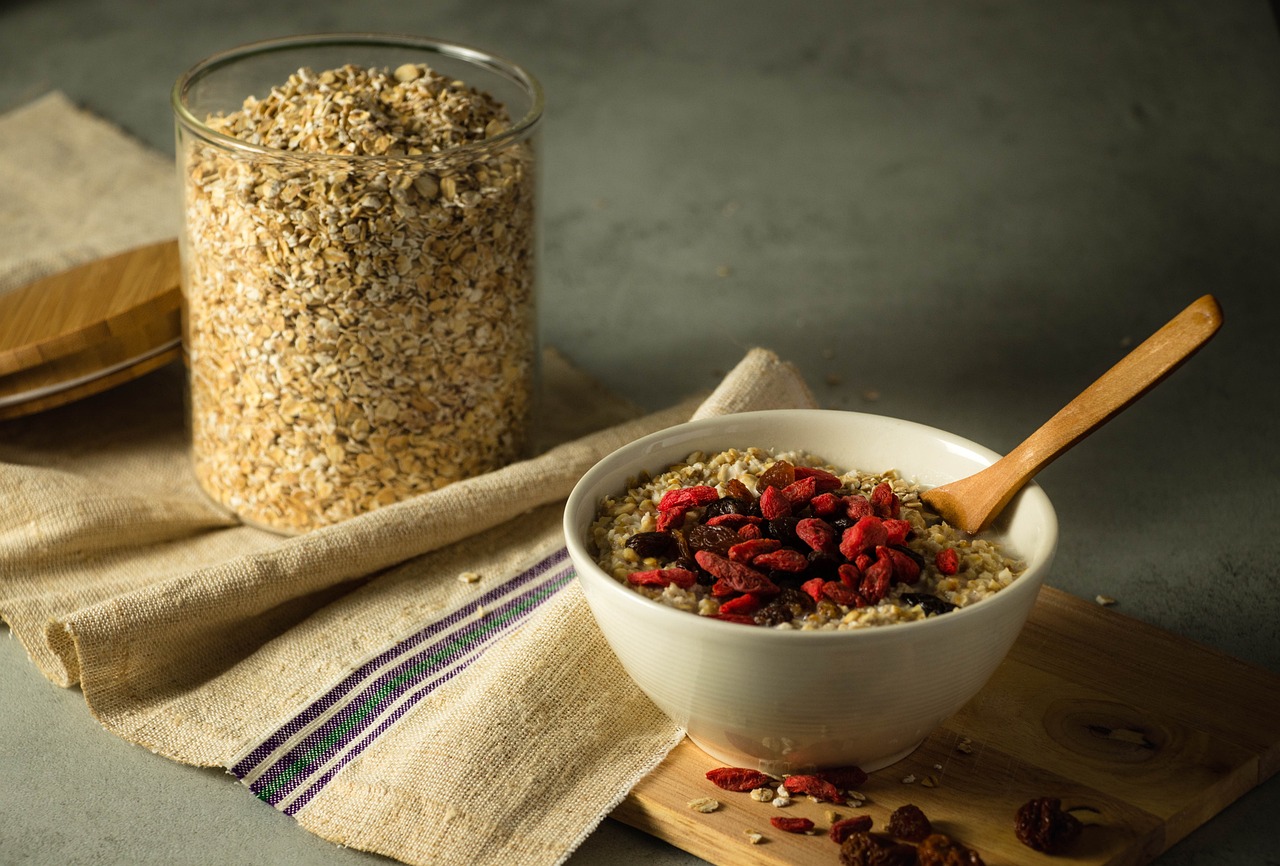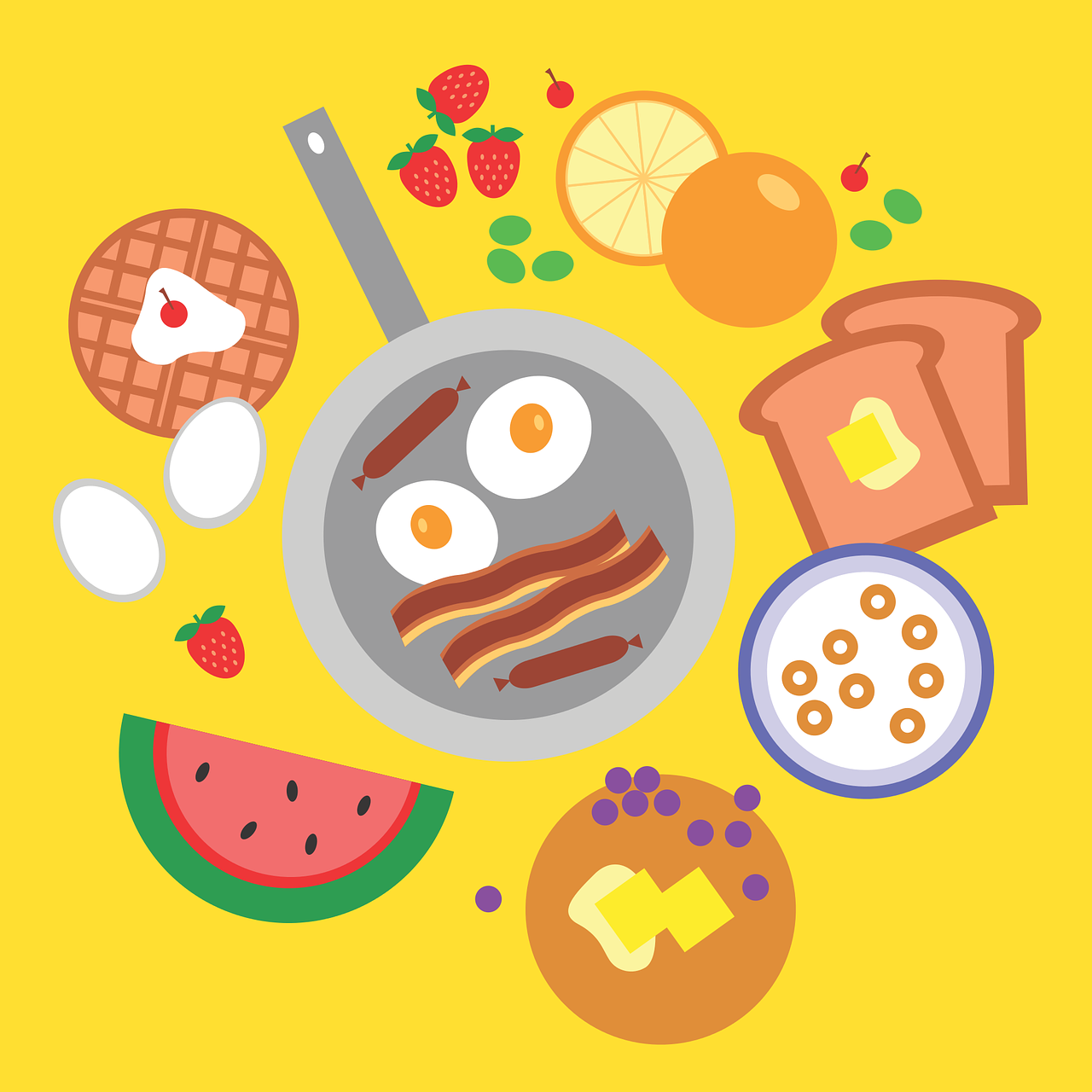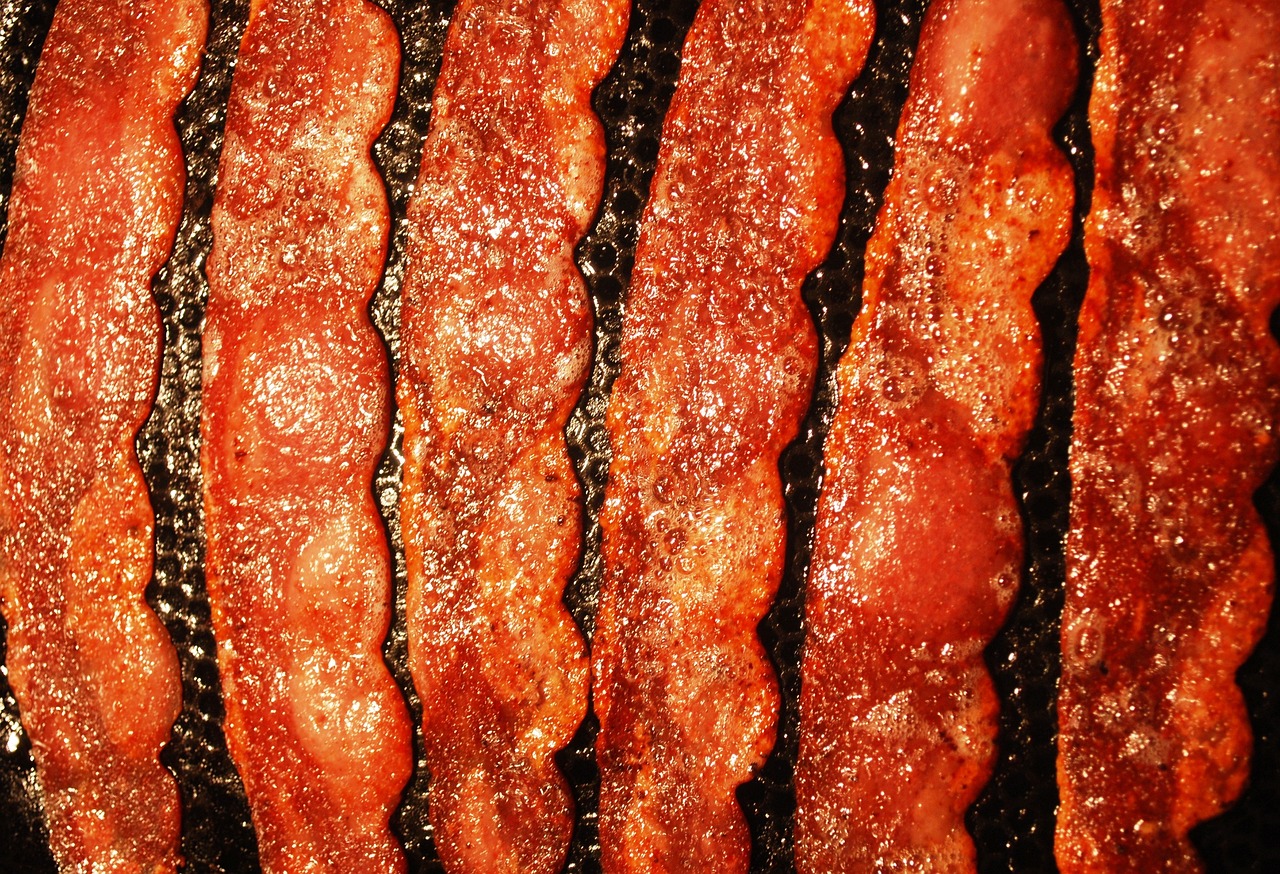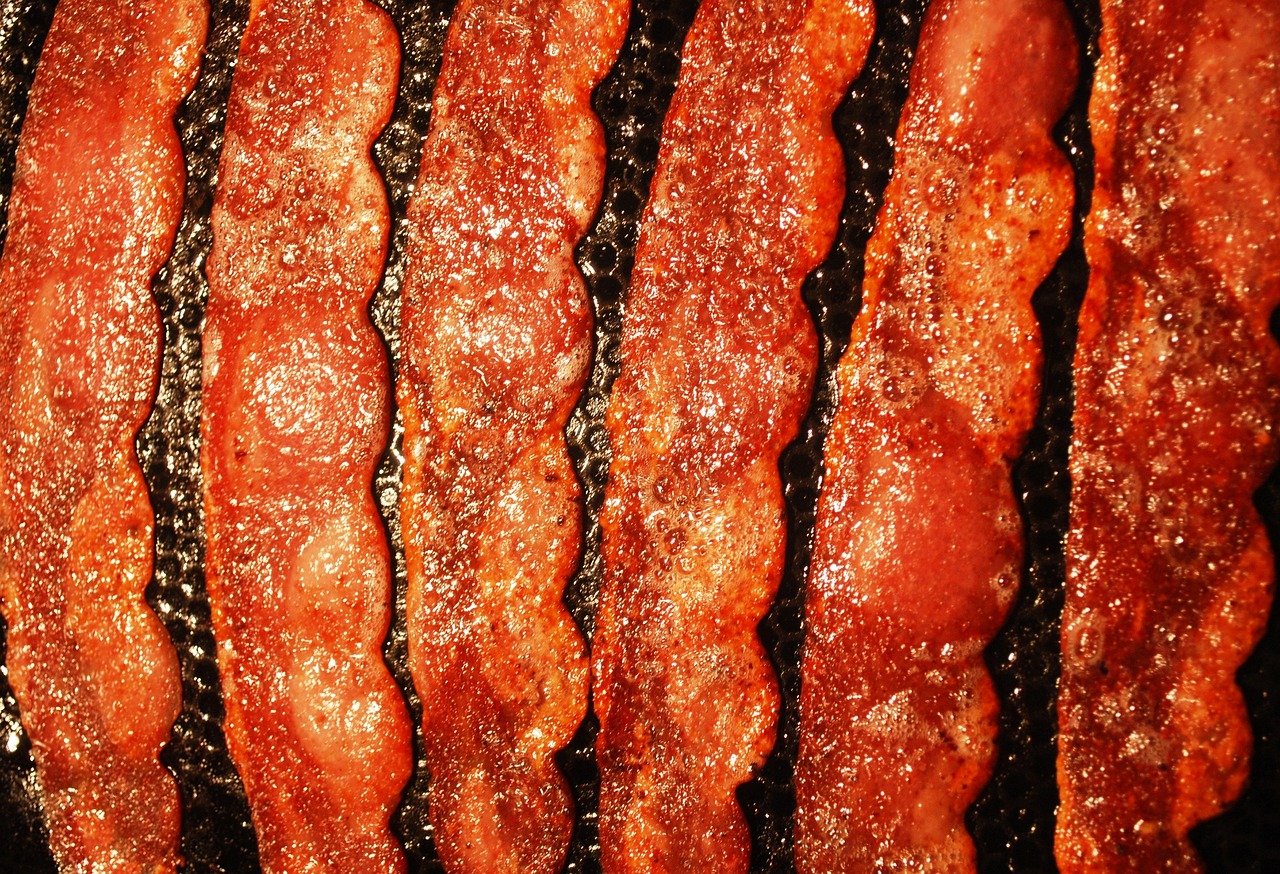Imagine starting your day with a plate of perfectly poached eggs, their creamy yolks oozing out with the gentle stab of a fork. It’s a breakfast dream come true. But poaching eggs can be a tricky skill to master. Don’t worry though, because Tastepan is here to help you become a pro in the art of poaching. With our expert tips and techniques, you’ll soon be creating perfectly cooked eggs that will impress even the most discerning breakfast enthusiasts. And that’s just the beginning. Our comprehensive guides and videos will have you mastering the art of cooking in no time. So get ready to elevate your culinary skills and unlock a world of delicious possibilities.

The Art of Poaching: Perfectly Cooked Eggs and More
Are you tired of your eggs always turning out the same way? Do you find yourself longing for a new and exciting way to prepare them? Look no further than the art of poaching! Poaching eggs is a simple yet versatile cooking technique that can elevate your breakfasts, lunches, and dinners to a whole new level. In this comprehensive article, we will explore the different types of poached eggs, learn the secrets to perfect poaching every time, discover other foods that can be poached, and even explore alternative techniques to poaching. So, let’s dive right in and uncover the wonders of poaching!
Why Poaching?
You may be wondering why poaching is worth your time and effort when there are so many other ways to cook eggs. The answer is simple – poaching allows you to achieve perfectly cooked eggs with a soft, delicate texture and a runny yolk that is simply irresistible. Unlike frying or scrambling, poaching involves gently simmering the egg in water, ensuring that the protein retains its shape and the yolk remains lusciously creamy. Poaching also offers a healthier alternative to other cooking methods as it requires little to no additional fat.
What is Poaching?
Poaching is a cooking technique that involves gently cooking ingredients in a liquid, typically water or broth, at a low temperature to achieve a desired level of doneness. In the case of eggs, poaching involves cracking the egg into simmering water, creating a smooth, silky texture with a perfectly cooked yolk. Poaching can also be used with other ingredients such as fish, chicken, or fruit, resulting in tender and flavorful dishes.

Advantages of Poaching
There are several advantages to poaching that make it a preferred cooking method for many. First and foremost, poaching allows you to achieve perfectly cooked eggs with a velvety texture and a custard-like yolk. This is especially beneficial when preparing dishes such as Eggs Benedict or Eggs Florentine, where a runny yolk is essential. Poaching also retains the nutritional value of the eggs as there is no additional fat required for cooking. Additionally, poaching is a versatile technique that can be used with various ingredients, allowing you to explore different flavors and textures.
Types of Poached Eggs
Now that you understand the concept of poaching, let’s explore the different types of poached eggs you can create.
Classic Poached Eggs
The classic poached egg is the epitome of elegance and simplicity. To create a classic poached egg, simply crack a fresh egg into simmering water and let it cook for about 3-4 minutes until the white is set but the yolk is still runny. This type of poached egg is perfect for topping toast, salads, or your favorite breakfast dish.
Hard Poached Eggs
If you prefer your eggs to have a firmer texture, opt for hard poached eggs. To achieve a hard poached egg, cook the egg for an additional 2-3 minutes, resulting in a fully set yolk. Hard poached eggs are great for slicing over salads or using as a protein-packed addition to grain bowls.
Soft Poached Eggs
For those who enjoy a delicate and runny yolk, soft poached eggs are the way to go. To create a soft poached egg, cook the egg for slightly less time, around 2-3 minutes. The result is a tender white and a yolk that oozes out when the egg is cut. Soft poached eggs are perfect for classics like Eggs Benedict or simply enjoyed on their own with a pinch of salt and pepper.
Egg White Poaching
If you’re looking to cut back on calories or have certain dietary restrictions, egg white poaching is a great option. To poach just the egg white, carefully separate the yolk from the white and drop the white into simmering water. Cook for 3-4 minutes until the white is set, resulting in a low-fat and protein-rich alternative to whole poached eggs.
Sous Vide Poached Eggs
If you’re a fan of modern cooking techniques, you might want to try sous vide poached eggs. Sous vide involves sealing the eggs in a plastic bag and cooking them in a controlled water bath at a precise temperature. This method allows for consistent results and a perfectly cooked egg every time. Simply set the water bath to your desired temperature, whether it’s a soft, medium, or hard-cooked yolk, and let the sous vide machine do the work for you.
Perfect Poached Eggs Every Time
Now that we’ve explored the different types of poached eggs, let’s delve into the secrets to achieving perfect poached eggs every time.
Fresh Eggs
The first and most important factor in poaching eggs is using fresh eggs. Fresh eggs have a higher protein content, which helps the egg white to set more easily. To test the freshness of an egg, simply place it in a bowl of water – if it sinks and lies flat on the bottom, it’s fresh. If it stands upright on the bottom or floats, it’s not as fresh and may not yield the desired results.
Temperature and Timing
Maintaining the proper temperature and timing is crucial when poaching eggs. Bring a saucepan of water to a gentle simmer, around 160-180°F (71-82°C), and add a splash of vinegar to help the egg white coagulate. Carefully crack the egg into a small bowl or ramekin before gently sliding it into the water. Cook for the desired time, depending on your preference, and use a slotted spoon to carefully remove the poached egg from the water.
The Swirl Technique
One technique that can help achieve a neater poached egg is the swirl technique. Before adding the egg to the simmering water, create a gentle whirlpool by stirring the water with a spoon. This motion helps to form a more compact and even shape, preventing the white from spreading out and resulting in a more visually appealing poached egg.
Using Vinegar
The addition of vinegar to the poaching liquid helps to lower the pH level, which in turn helps the egg white to coagulate more easily. The vinegar also adds a subtle tangy flavor to the egg, enhancing the overall taste. Use a mild vinegar, such as white wine vinegar or apple cider vinegar, and add a tablespoon to the poaching liquid.
Poaching Pods
If you’re looking for an even easier way to achieve perfectly poached eggs, consider investing in poaching pods. These small silicone cups float in the simmering water and hold the eggs in place, allowing for a consistent shape and quick removal.
Troubleshooting
Despite your best efforts, sometimes poaching eggs can be a bit tricky. If your eggs are ending up stringy or watery, it may be due to not having fresh eggs or the water not being hot enough. If the whites are spreading out too much, try the swirl technique or use a slotted spoon to hold the egg white together as it cooks. And if you’re finding it difficult to remove the poached eggs from the water, run a slotted spoon or a fine-mesh sieve under the egg to remove any excess water.

Poaching Beyond Eggs
While poached eggs may be the most well-known application of poaching, there are many other foods that can benefit from this gentle cooking technique. Let’s explore a few options:
Poached Fish
Poaching fish is a fantastic way to achieve moist and tender results. The gentle cooking method prevents the fish from drying out, resulting in perfectly cooked fillets. Simply simmer the fish in a flavorful broth or seasoned water until it flakes easily with a fork.
Poached Chicken
Poaching chicken is another excellent option for meltingly tender meat. The poaching liquid can be as simple as water, or you can add aromatics and herbs for added flavor. Poached chicken is great for salads, sandwiches, or using in other recipes that call for cooked chicken.
Poached Fruit
Poaching fruit can transform firm and tart fruits into tender and sweet delicacies. Whether it’s pears, peaches, or apples, poaching allows the fruit to absorb the flavors of the poaching liquid, resulting in a deliciously fragrant dessert. Poached fruit can be enjoyed on its own or used as a topping for pancakes, waffles, or ice cream.
Elevate Your Poached Eggs
Now that you’ve mastered the art of poaching eggs, let’s explore some delicious ways to enjoy them.
Poached Eggs with Hollandaise Sauce
One classic pairing for poached eggs is hollandaise sauce. The rich, buttery sauce complements the velvety texture of the egg beautifully. Serve the poached eggs on a toasted English muffin and top with a generous drizzle of hollandaise sauce for a decadent brunch favorite.
Poached Eggs on Avocado Toast
For a healthy and satisfying breakfast or brunch option, try serving your poached eggs on top of avocado toast. The creamy avocado provides a perfect backdrop for the perfectly poached eggs, creating a beautiful combination of flavors and textures.
Poached Eggs on Crab Cakes
Take your brunch to the next level by serving your poached eggs on a bed of homemade crab cakes. The crispy exterior of the crab cakes paired with the soft poached eggs creates a tantalizing contrast of textures, while the flavors meld together for a truly unforgettable dish.
Poached Eggs on Sautéed Spinach
If you’re looking to incorporate more greens into your diet, try serving your poached eggs on a bed of sautéed spinach. The wilted spinach provides a nutritious and flavorful base for the eggs, creating a dish that is both satisfying and healthy.
Poached Eggs on Hash Browns
For a hearty and comforting breakfast, serve your poached eggs on a bed of crispy hash browns. The soft, runny yolk combines with the crispy potatoes to create a mouthwatering combination of textures, making this dish a favorite among breakfast lovers.
Alternative Techniques to Poaching
While poaching may be a fantastic way to cook eggs and other ingredients, it’s not the only technique available. Let’s explore a few alternatives:
Sunny-Side Up Eggs
If you prefer your eggs with a fully cooked yolk and a runny white, opt for sunny-side up eggs. Simply crack the eggs into a hot non-stick skillet and cook them gently until the whites are set and the yolks are still runny. This technique creates a beautiful presentation with a vibrant, golden yolk.
Fried Eggs
Similar to sunny-side up eggs, fried eggs are cooked on one side until the whites are set and the yolk remains runny. The main difference is that fried eggs are flipped to cook briefly on the other side, creating a slightly more cooked yolk compared to sunny-side up eggs.
Scrambled Eggs
If you prefer your eggs fully cooked with a light and fluffy texture, scrambled eggs are the way to go. Whisk the eggs with a touch of milk or cream, season with salt and pepper, and cook them gently in a non-stick skillet until they reach your desired consistency. Scrambled eggs are a versatile option that can be enjoyed on their own or mixed with various ingredients such as cheese, vegetables, or meats.
Tools and Equipment for Poaching
While poaching eggs can be done with minimal equipment, there are a few tools that can make the process easier and yield consistent results. Let’s explore some essential tools for poaching:
Egg Poacher
An egg poacher is a specialized cooking tool designed specifically for poaching eggs. It consists of a tray with individual cups that hold the eggs, allowing for easy removal and maintaining the shape of the poached eggs. Egg poachers can be stovetop or electric and come in various sizes and styles to accommodate different needs.
Poaching Cups
Similar to egg poachers, poaching cups are individual cups that float in the simmering water, holding the eggs in place. They are usually made of silicone or stainless steel and can be easily cleaned and reused for future poaching adventures.
Slotted Spoon
A slotted spoon is an essential tool for removing the poached eggs from the water. Its design allows the water to drain away, leaving you with perfectly poached eggs ready to be enjoyed.
Saucepan
A saucepan is a versatile cooking vessel that can be used for poaching eggs or other ingredients. Look for a pan with a lid and a wide base to provide enough room for the eggs to cook without overcrowding.
Health Benefits of Poached Eggs
Apart from being a delicious and versatile option, poached eggs also offer several health benefits. Let’s take a look:
Nutrient Content
Eggs are packed with vital nutrients that contribute to a healthy diet. They are an excellent source of protein, offering all the essential amino acids needed for optimal health. Eggs are also a rich source of vitamins and minerals, including vitamins D, E, B6, B12, iron, and folate.
Low in Calories
One of the advantages of poached eggs is their low caloric content. By using a cooking method that doesn’t require additional fat, you can enjoy the nutritional benefits of eggs without unnecessary calories.
Omega-3 Fatty Acids
Eggs are a natural source of omega-3 fatty acids, which have been associated with numerous health benefits, including reducing inflammation, improving heart health, and supporting brain function. Opting for organic or pasture-raised eggs can result in even higher omega-3 fatty acid content.
Poaching Q&A
To address some common questions about poaching, let’s dive into a quick Q&A:
Can you reheat poached eggs?
While it’s best to enjoy poached eggs when they are freshly cooked, they can be reheated. The best method is to bring a pot of water to a gentle simmer, then carefully drop the poached eggs into the water for 30 seconds until they are heated through. Be cautious not to overcook them and remember that reheated poached eggs may not have the same texture as freshly poached eggs.
Can you freeze poached eggs?
Unfortunately, poached eggs do not freeze well. The delicate texture of the whites and the creamy yolk can be compromised by freezing and thawing. It’s best to enjoy poached eggs fresh or store any leftovers in the refrigerator for a day or two.
How long can you keep poached eggs?
Poached eggs are best enjoyed immediately after cooking, but if you have leftovers, they can be stored in the refrigerator for up to two days. Keep them in an airtight container or covered in a bowl with plastic wrap to prevent them from drying out.
Can you poach eggs in advance?
If you’re hosting a brunch or preparing a large meal, you may want to poach eggs in advance to save time. Simply follow the poaching process as usual, then transfer the poached eggs to an ice bath to stop the cooking process. When you’re ready to serve, reheat them in simmering water for 30 seconds to warm them up. Just be mindful not to overcook them during reheating.
Conclusion
In conclusion, the art of poaching offers a myriad of possibilities for both eggs and other ingredients. By mastering the techniques and using the right tools, you can enjoy beautifully poached eggs with a soft, runny yolk and a delicate texture. Whether you prefer classic poached eggs, hard or soft poached eggs, or even egg white poaching, you’ll find that poaching is a versatile and healthy cooking method that can transform any dish. So next time you’re in the mood for eggs, don’t hesitate to try your hand at poaching and elevate your culinary skills to new heights!

